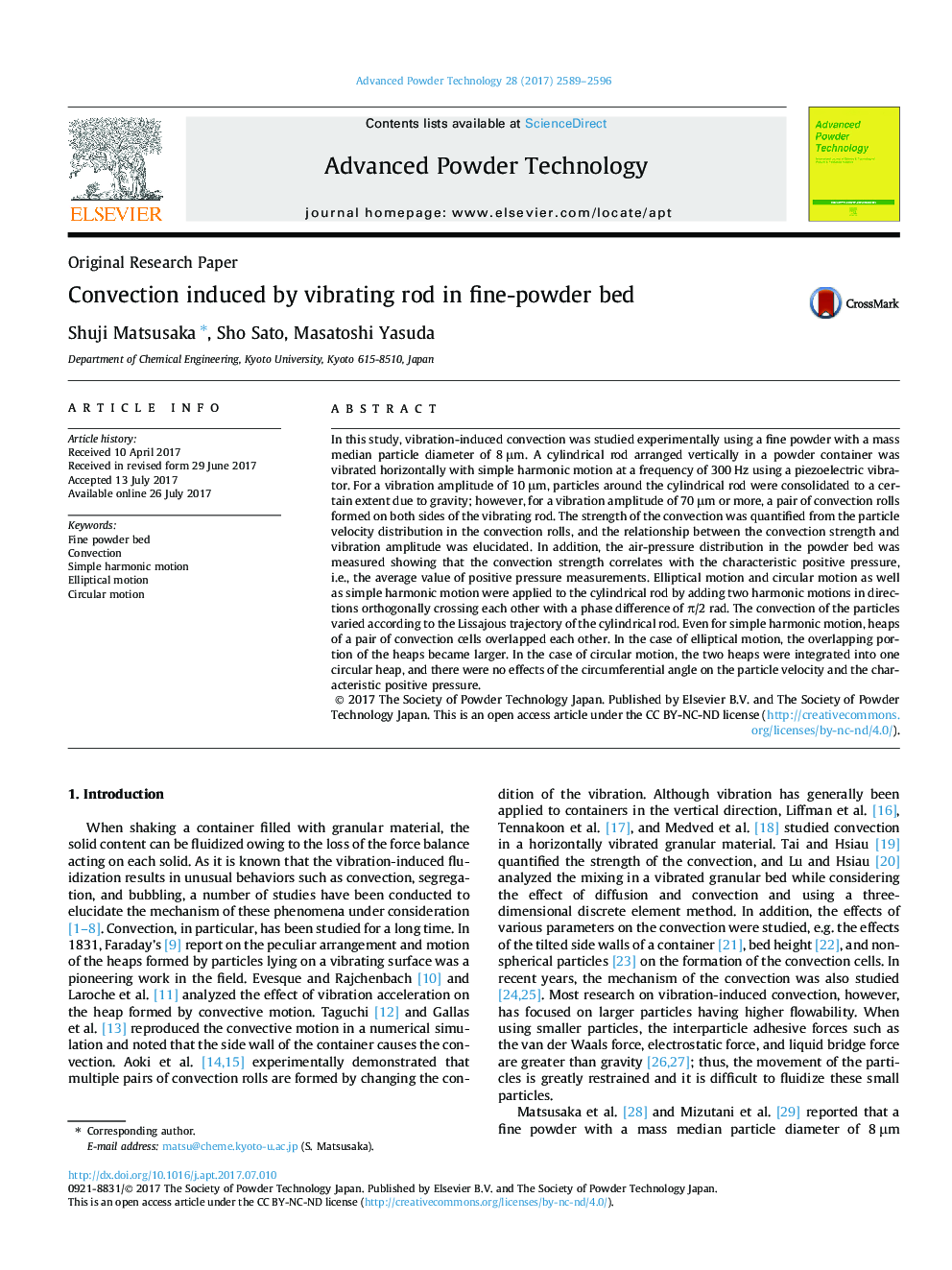| Article ID | Journal | Published Year | Pages | File Type |
|---|---|---|---|---|
| 6464544 | Advanced Powder Technology | 2017 | 8 Pages |
â¢Vibration-induced convection has been studied experimentally.â¢A cylindrical rod arranged vertically in a powder container is vibrated horizontally.â¢A fine powder with a mass median particle diameter of 8 μm is fluidized.â¢The convection strength correlates with the characteristic positive pressure.â¢Elliptical motion and circular motion as well as simple harmonic motion are applied.
In this study, vibration-induced convection was studied experimentally using a fine powder with a mass median particle diameter of 8 μm. A cylindrical rod arranged vertically in a powder container was vibrated horizontally with simple harmonic motion at a frequency of 300 Hz using a piezoelectric vibrator. For a vibration amplitude of 10 μm, particles around the cylindrical rod were consolidated to a certain extent due to gravity; however, for a vibration amplitude of 70 μm or more, a pair of convection rolls formed on both sides of the vibrating rod. The strength of the convection was quantified from the particle velocity distribution in the convection rolls, and the relationship between the convection strength and vibration amplitude was elucidated. In addition, the air-pressure distribution in the powder bed was measured showing that the convection strength correlates with the characteristic positive pressure, i.e., the average value of positive pressure measurements. Elliptical motion and circular motion as well as simple harmonic motion were applied to the cylindrical rod by adding two harmonic motions in directions orthogonally crossing each other with a phase difference of Ï/2 rad. The convection of the particles varied according to the Lissajous trajectory of the cylindrical rod. Even for simple harmonic motion, heaps of a pair of convection cells overlapped each other. In the case of elliptical motion, the overlapping portion of the heaps became larger. In the case of circular motion, the two heaps were integrated into one circular heap, and there were no effects of the circumferential angle on the particle velocity and the characteristic positive pressure.
Graphical abstractDownload high-res image (71KB)Download full-size image
